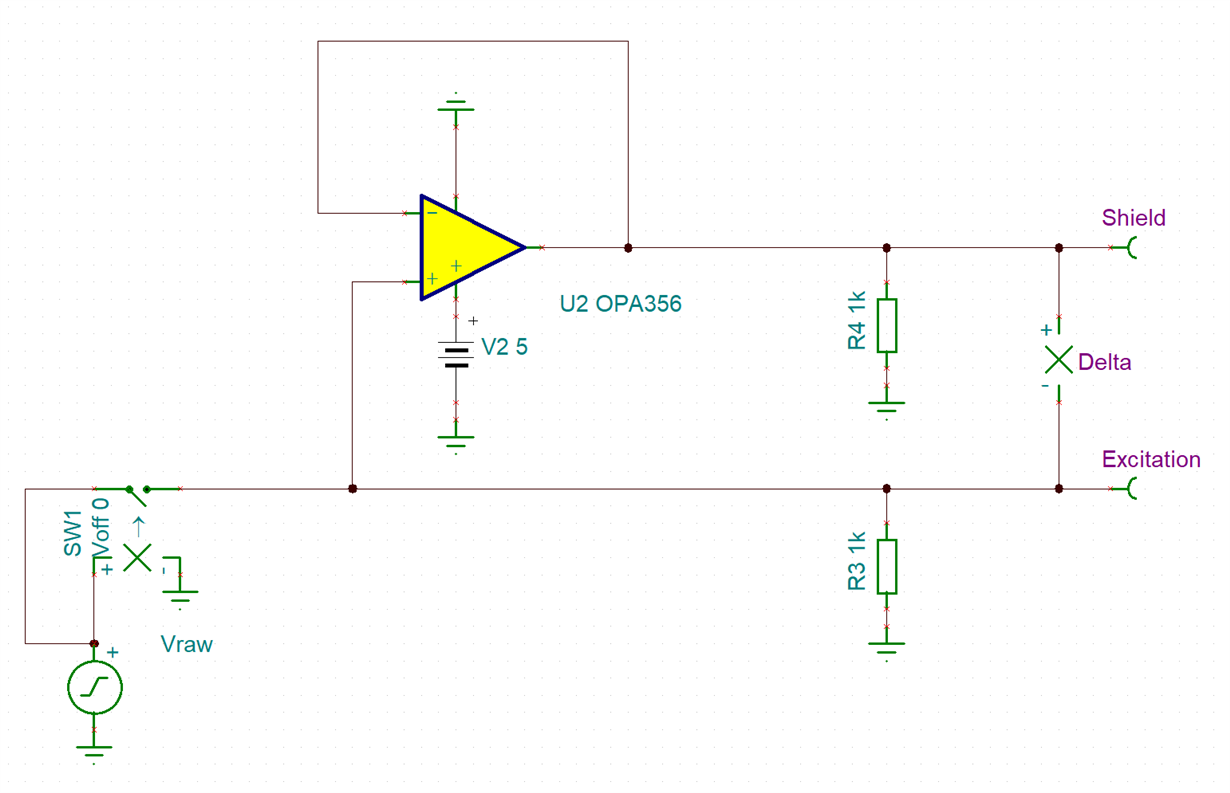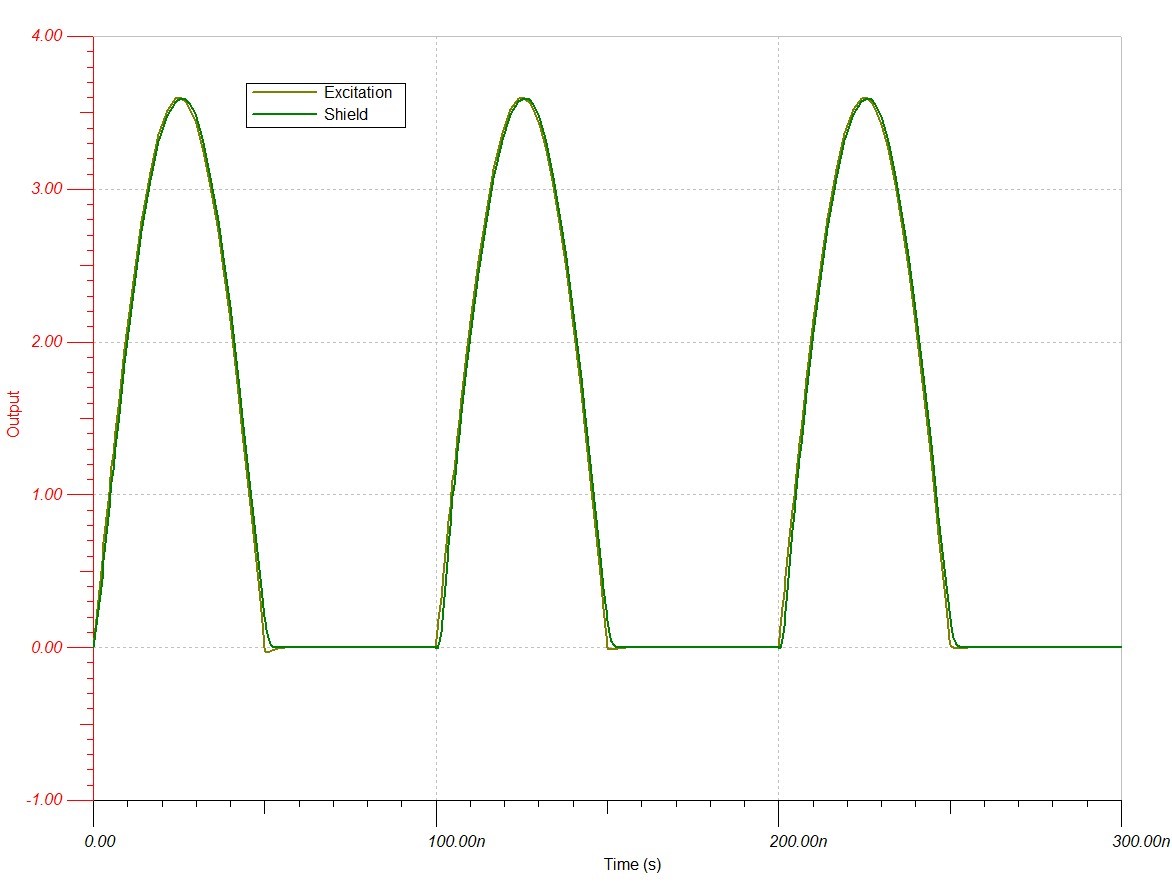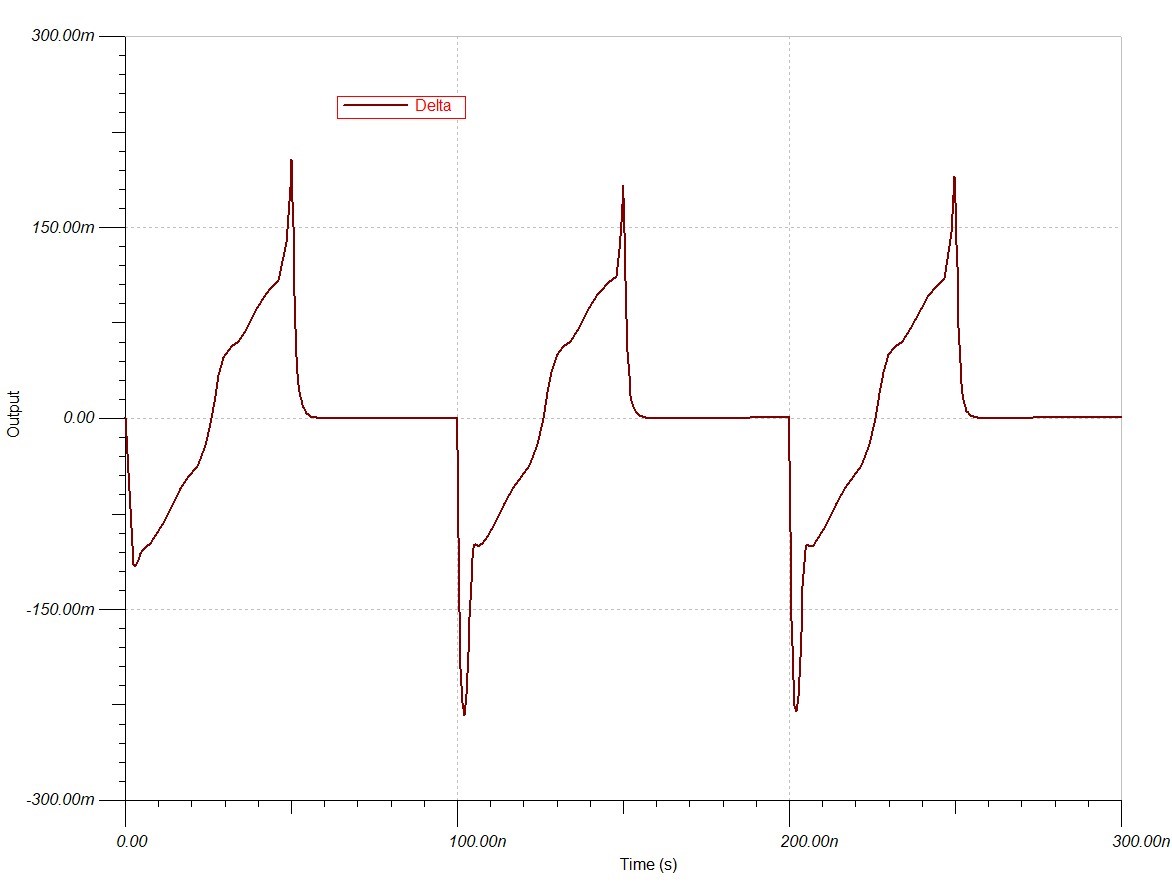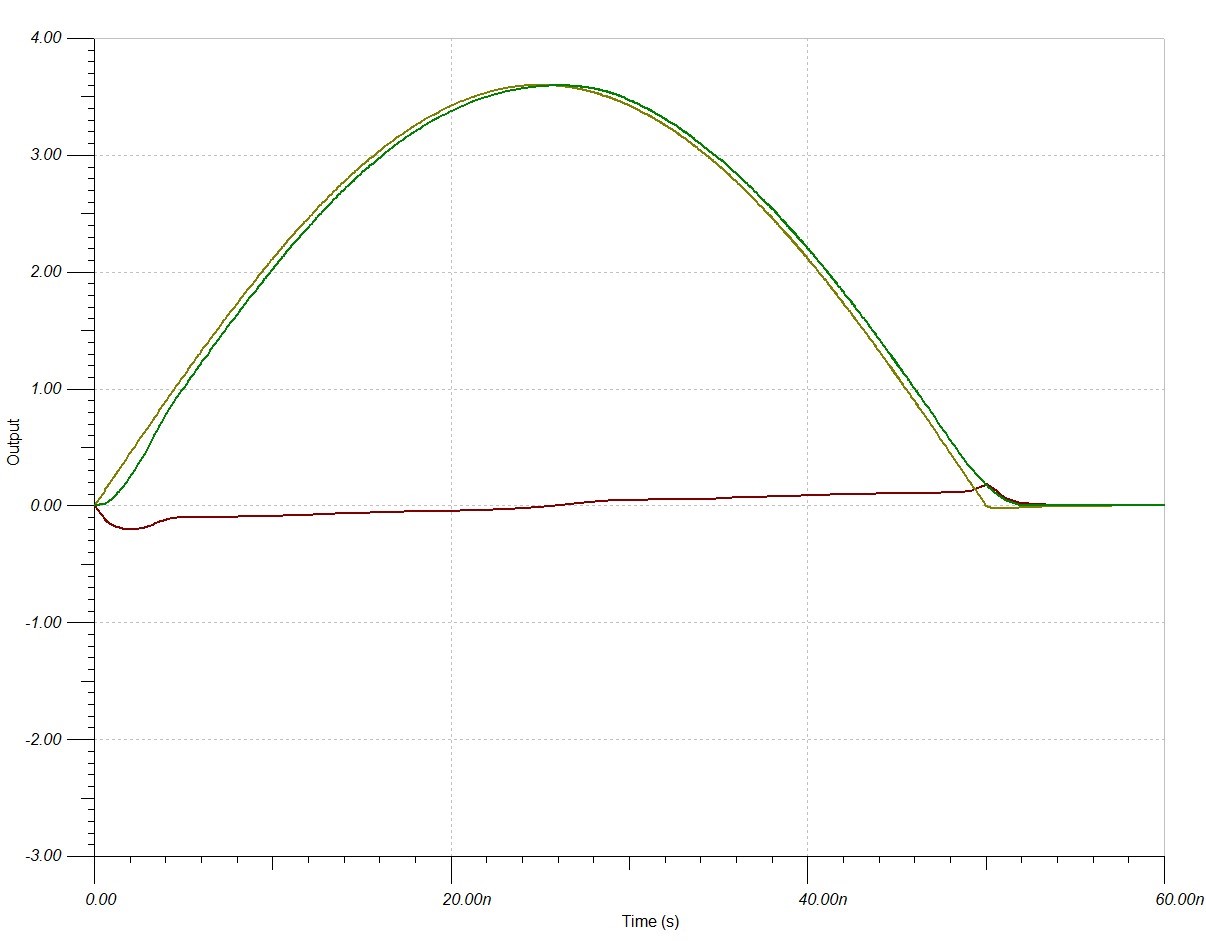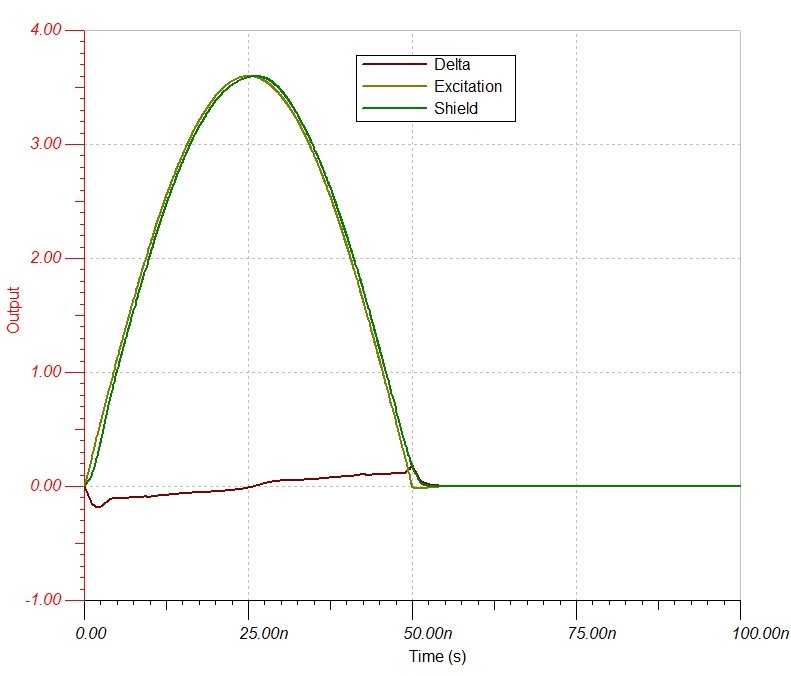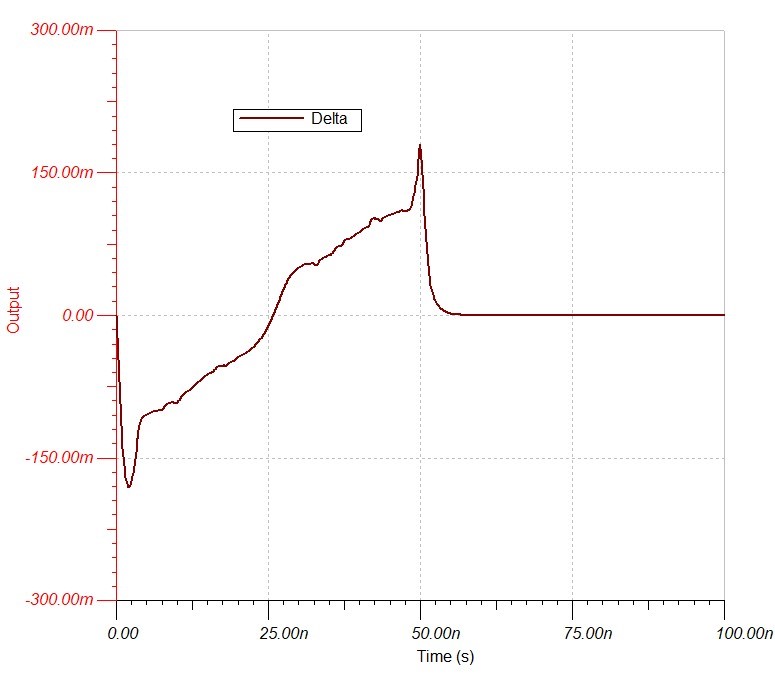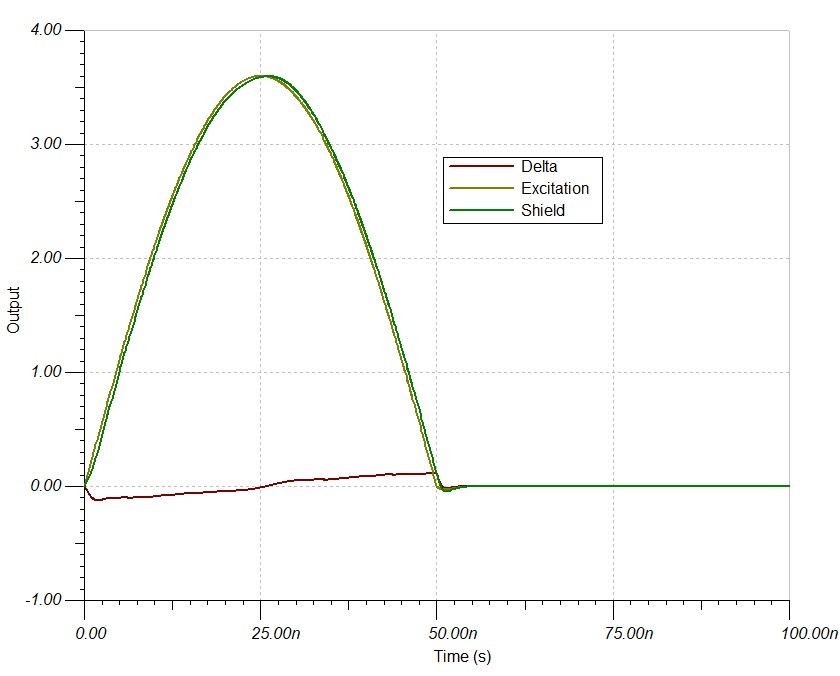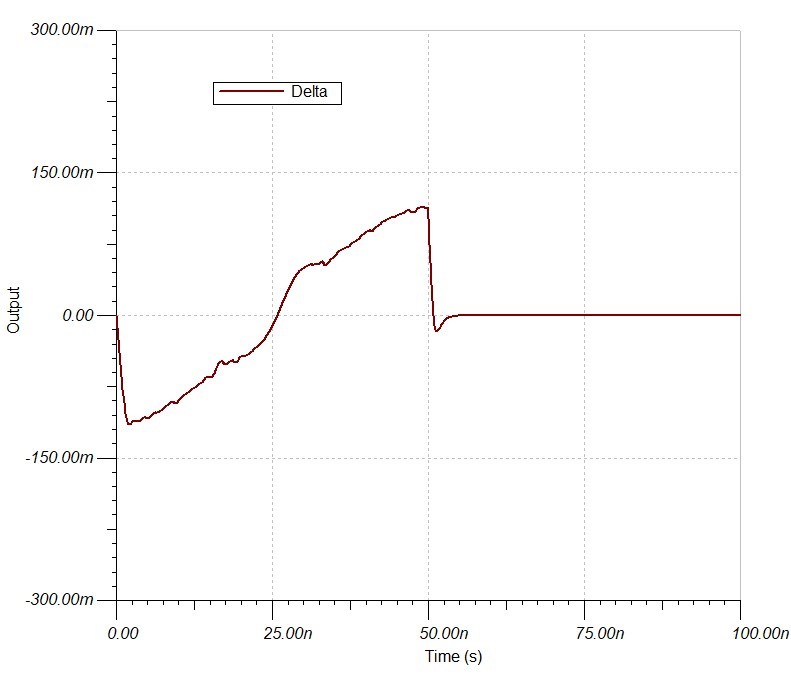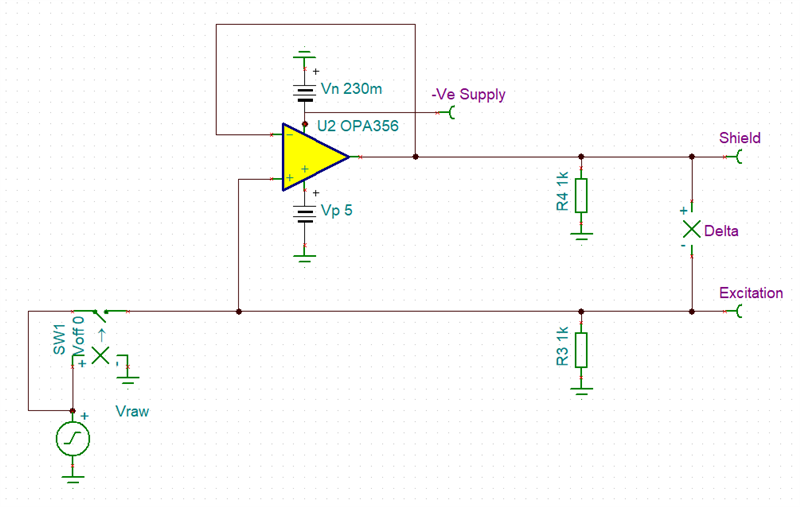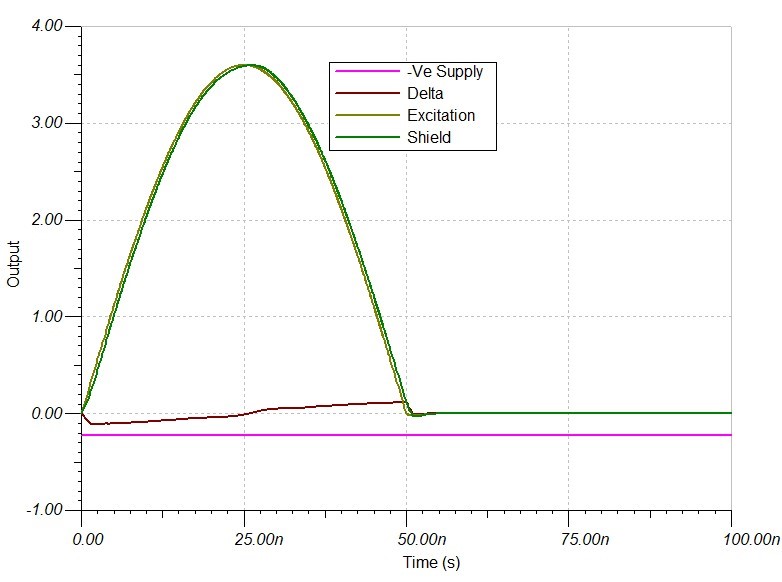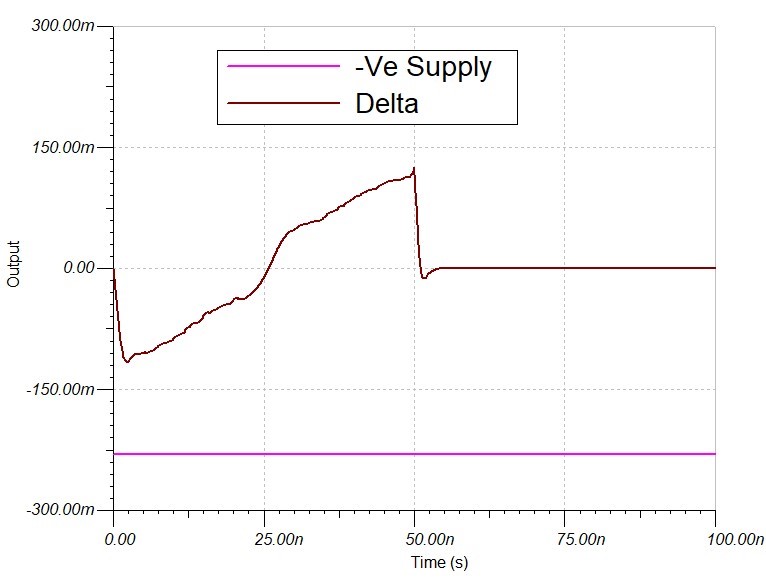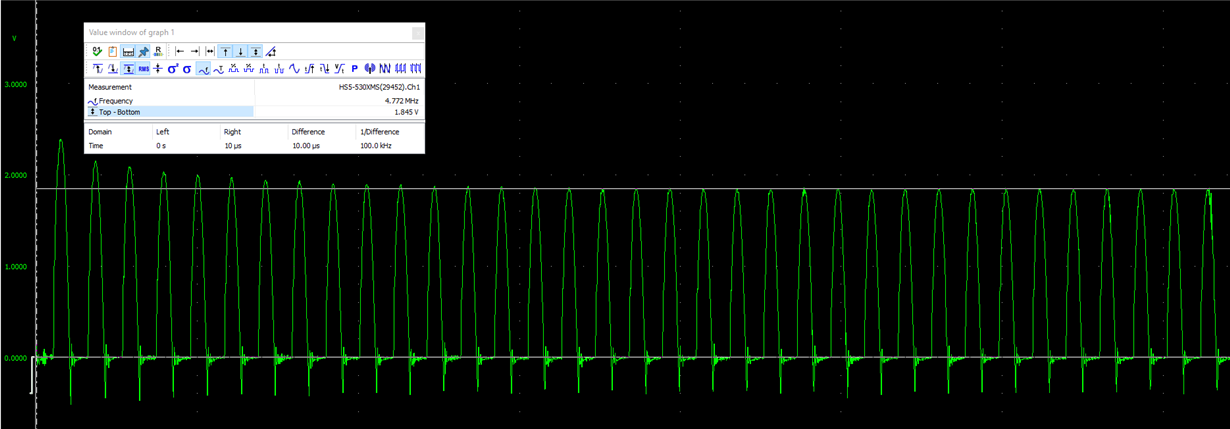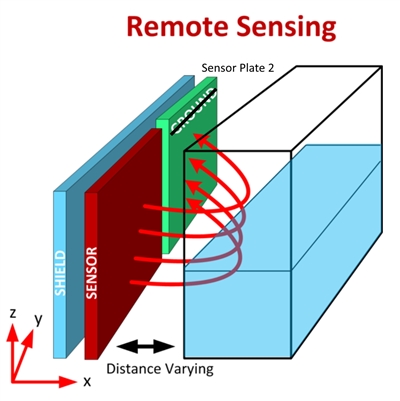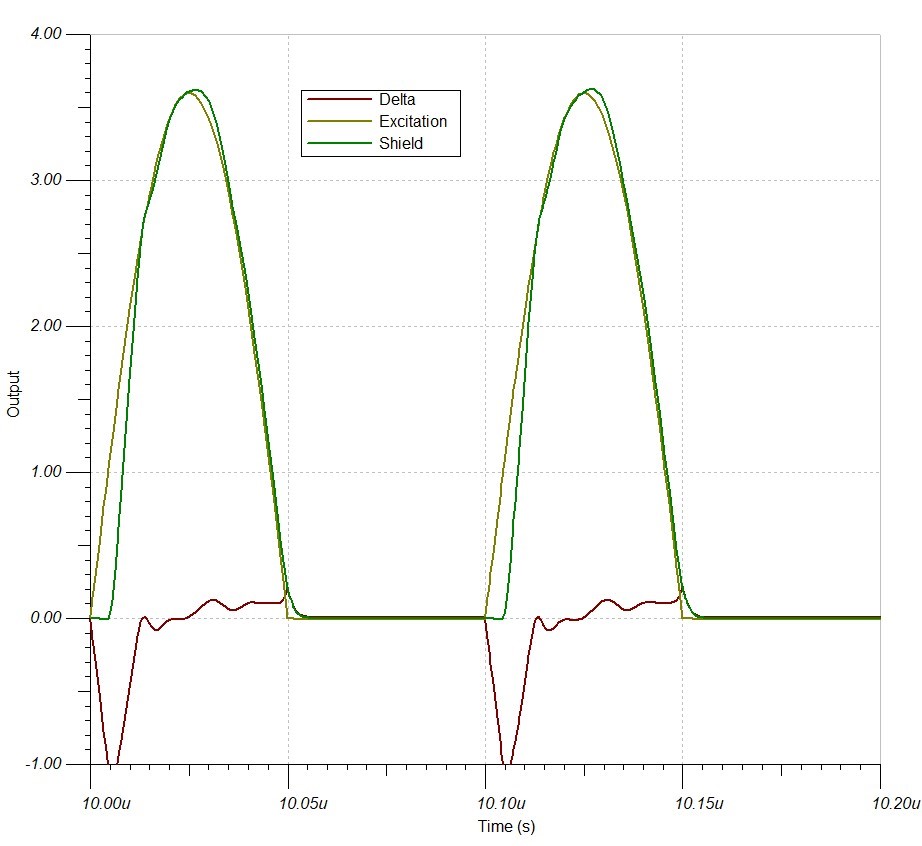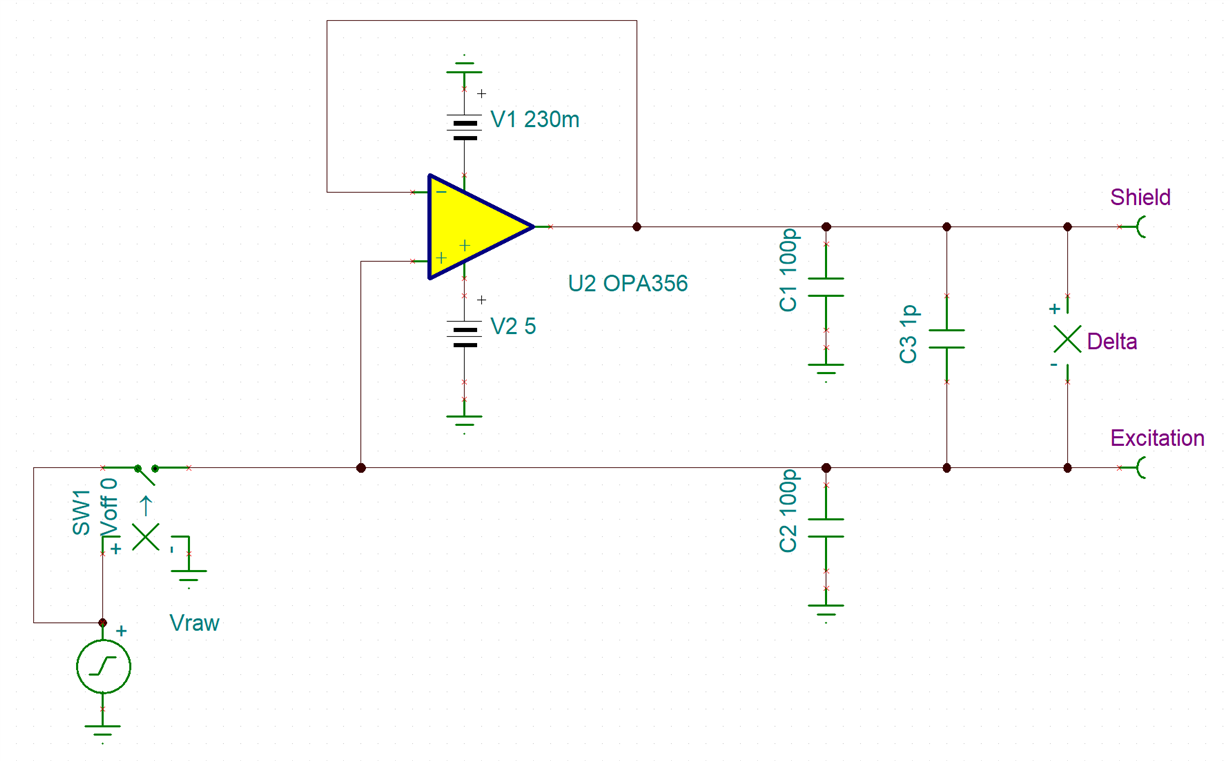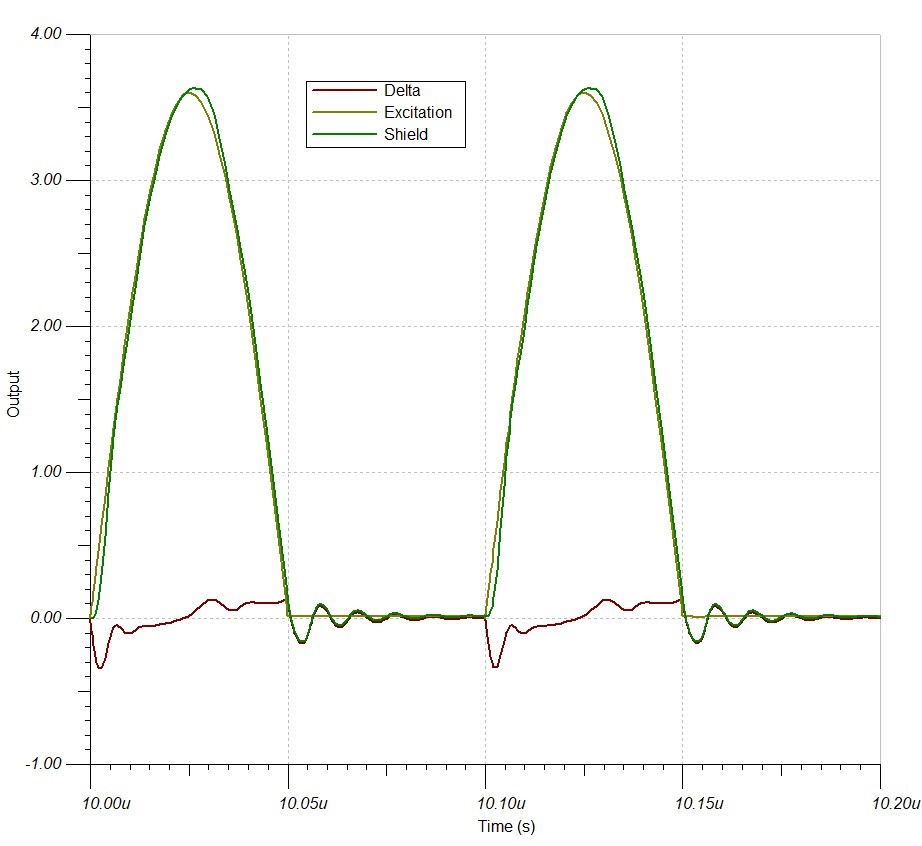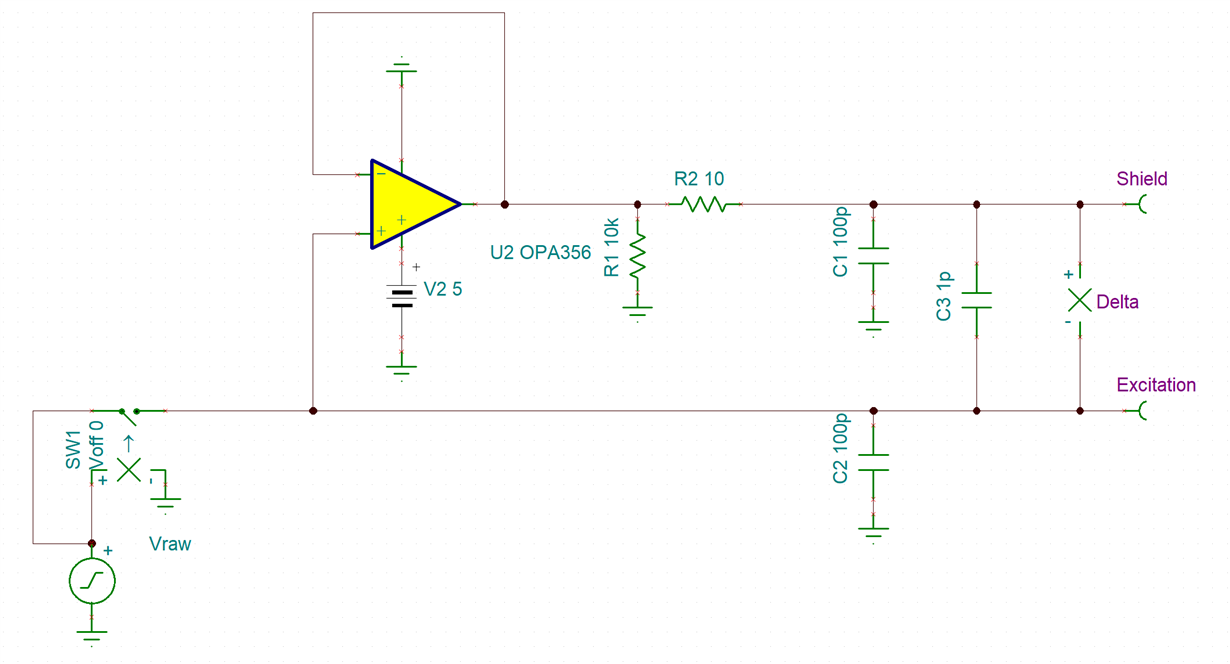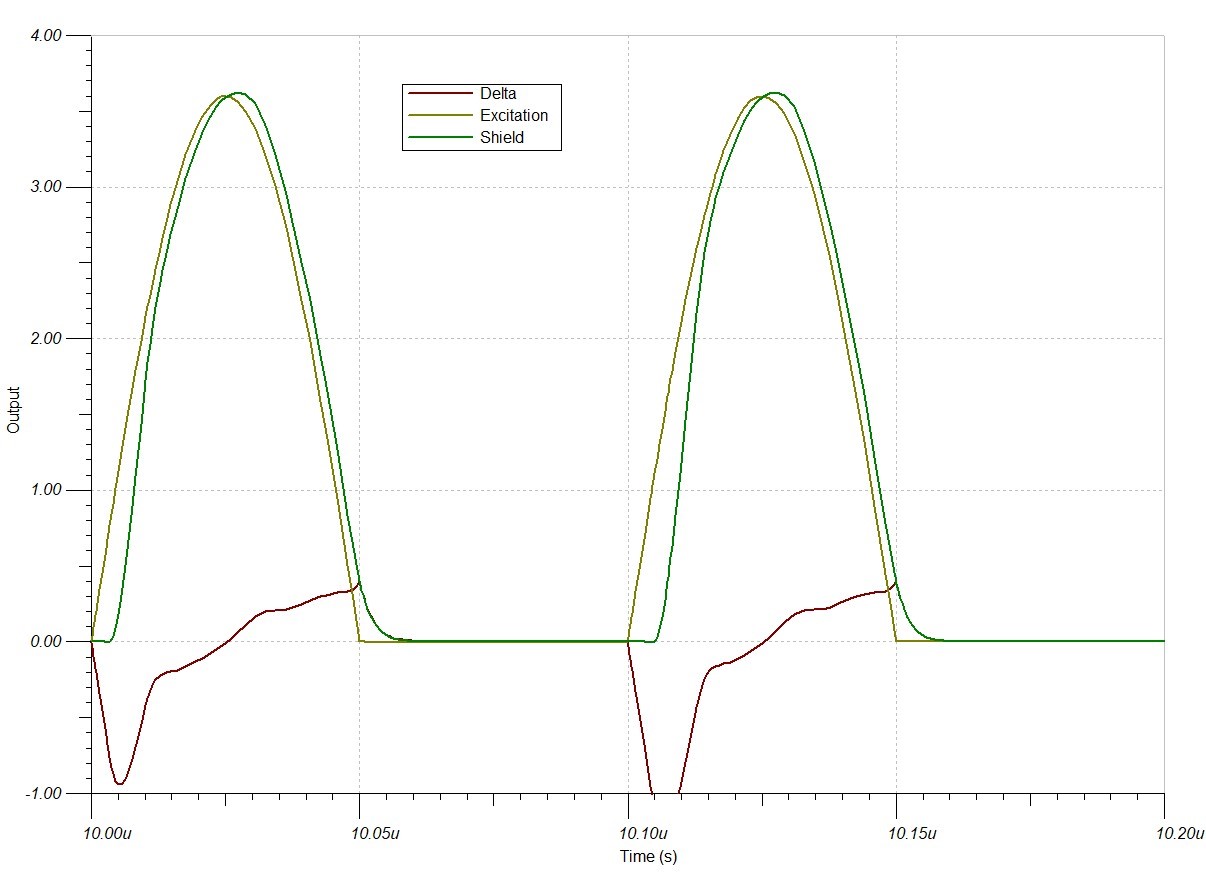Other Parts Discussed in Thread: FDC2214, , LM79, LM7705, FDC2214EVM, FDC1004, OPA365
Hi,
I’m trying to design an active shield driver for the FDC2214 that is able to accurately voltage follow the half-sine, 10MHz, 3.6V signal.
The frequency can vary from 10kHz to 10MHz, and the amplitude can vary from 1.2V to 3.6V (not sure about the upper voltage limit).
The following image shows what I’m getting out of the oscilloscope but I think the peak is meant to be capped at 1.8V (I have an E2E thread open to resolve that. https://e2e.ti.com/support/sensors/f/1023/t/872784
Either way, it still gives a good idea of what shape the expected signal will take.
3.6V is the extreme I’m working with until I resolve the issues with FDC2214.
The minimum slew rate is 113.1V/µs (Slew rate = 2 π f V) but no op amp close to that value seems to work. I went for the overkill approach and drew up a simple schematic using OPA356 with a slew rate of 360V/µs, Gain Bandwidth Product of 200MHz and Small-Signal Bandwidth of 450MHz.
I can get the accuracy pretty close as can be seen in the simulations below. However, this simulation isn’t realistic due to the way I've set up the load.
In reality, the OPA356 will be driving a capacitive load which will be determined by the size of the sensor plates.
(1) How can we connect the OPA356 to drive a capacitive active shield?
(2) Is it possible to improve the voltage tracking accuracy? In this simulation, we are looking at an inaccuracy of roughly -230mV to 200mV
(3) How do I setup the capacitive load in TINA TI?I’m not really sure what would accurately represent the capacitive plates. R3 and R4 definitely don’t represent the sensor layout but the simulation doesn’t work without them. I tried a few different passive configurations but they didn’t seem to work.
(4) Is there a better Op Amp that we could try?
Kind regards,




